20070220
20070201
Children of Helen
About a year ago, just before Leon was born, I acquired a rather acute interest in genealogy. With some assistance from Imke, research material from Pake Atze and the Frisian historic treasure trove Tresoar I started to unravel my family�s path back in time. I started out with the Van Dijk family, who did acquire a family heir after all. Curiosity about my mother�s background made me explore the Oosterhoff family history.
Following the paper trail, most Dutch family histories evaporate around the 17th century. At that time, our ancestors were illiterate peasants without possessions and without a proper family name. Sporadically family events might be recorded in the odd church registry, but in general, this is where the trail runs cold.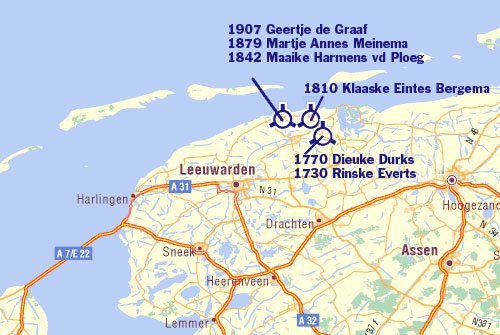
Looking at the places of birth of the foremothers of Geertje: Martje, Maaike, Klaaske, Dieuke and Rinske, you can�t help to think that they were surely not the wandering type. Maybe they were around at the times when the surrounding Humsterland was one of the most densely populated areas in Europe (8th century CE). Who knows, they may even have been there during the times of the Funnelbeaker culture. Recent archeological finds have confirmed that the area around Ternaard was inhabited around that period, around 3.500 BCE. What we do know is that they must have crossed the Carpathian ridge from the Black Sea region around 20.000 years ago, after the last glacial maximum.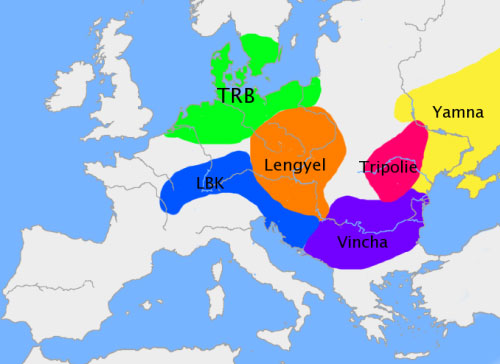
At least that is what the National Geographic Society told me. Just after I got so engrossed in genealogy, I read about the Genographic Project. A team of genetic specialists claimed to be able to tell more about early ancestry by means of DNA analysis. The world wide research programme records specific DNA strands and infers from the dispersal patterns how our ancestors must have wandered the earth.
Amongst all other DNA-material, men pass on their Y-chromosome to their sons. Just as mothers pass on their mitochondrial DNA to their sons and daughters. During the transcription process copy errors may occur from time to time, giving rise to the mutations that make people different all over the world. Tracking these (sometimes minute) differences in DNA make-up, scientists have been able to track back the roads our ancestors took and the places they stopped by along the way. They have even been able to assess the number of primordial mothers.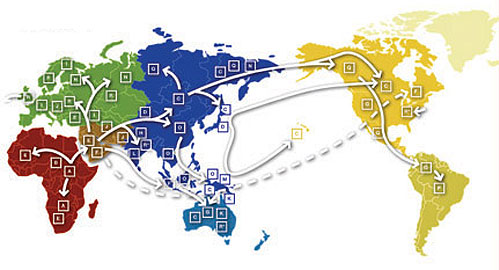
The Japanese have nine original matriarchs. The American Indian have four and the Europeans have seven. From the maternal line, the Oosterhoff family descends from one of those seven: Helena. A rather fertile strain because 41% of all Europeans belong to her �clan�. Sons and daughters of Helena can be found throughout Europe but the largest concentration can be found in Basque and the south of France.
Beppe Geertje�s matriarch descends from one of Helen�s daughters that founded the relatively rare haplogroup H6a. This group has been traced back to the Black Sea, just before the last glacial period and she may have taken the Funnelbeaker culture from the Ukraine to Frysl�n.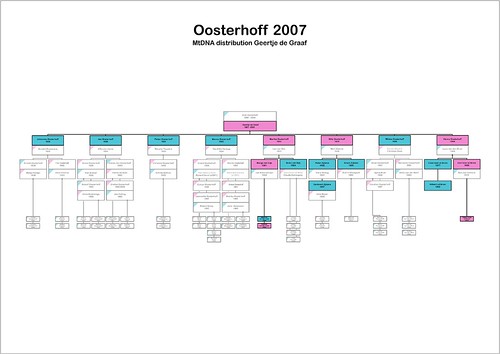
So now we know where Geertje�s mother came from. How about her offspring? Beppe passed on her mtDNA to her sons and daughters. Her daughters (Martha, Hilde and Hanny) passed it on to their sons and daughters. Her granddaughters Marga van Dijk and Corrine Venhuis passed it on to their sons and daughters. Currently, greatgranddaughters Hannah van der Laan and Tamar Venhuis are the heirs to Geertje�s mtDNA. This direct line doesn�t show by the name, but that is because we live in a patrilineal society, unlike the Trobriant or Nair people.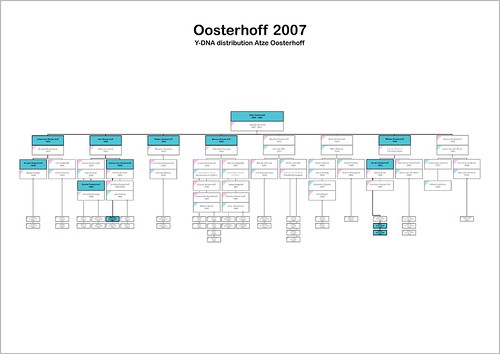
Where the male side of the Oosterhoff family comes from? I don�t know. We�d need a scrape sample from the cheek of one of Atze�s sons. His grandsons Arnold, Arend-Jan and Brian might do to. And his great grandsons Matthijs Oosterhoff and Marc and Cedric Oosterhoff too.
Of course, having this or another strand of DNA doesn�t make anyone more or less special. It is actually wonderful to see how rich and intertwined our family is and a reason to celebrate diversity. No matter from which patriarch or matriarch you descend.
geplaatst door
[sic!]
op
00:07
0
reacties
![]()
labels: dnarcheology
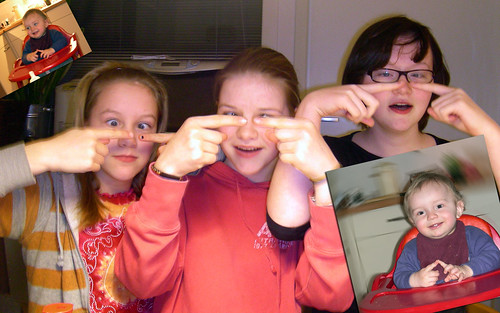

![[sic]. Get yours at bighugelabs.com/flickr [sic]. Get yours at bighugelabs.com/flickr](http://bighugelabs.com/flickr/profilewidget/recent.compact/bcbcbc/000000/33882660@N00.jpg)